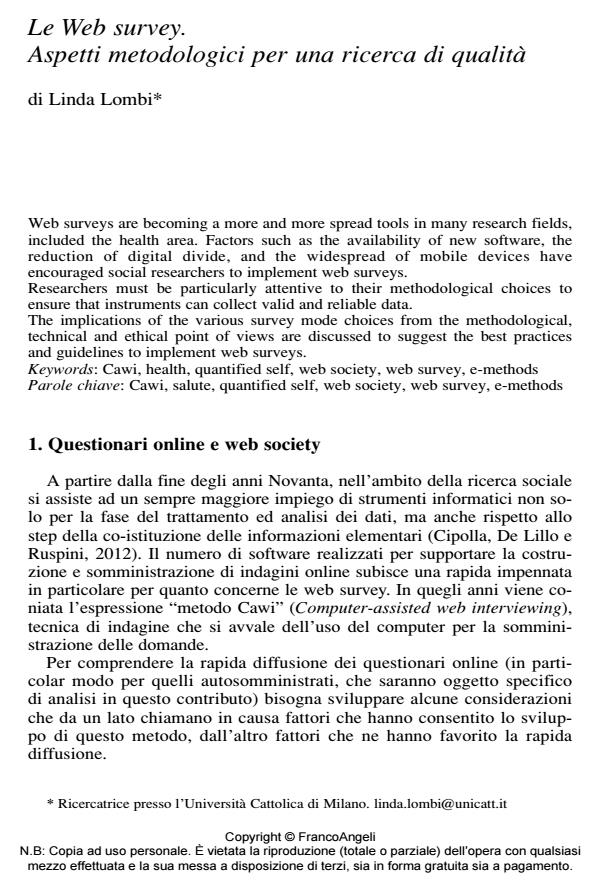Le Web survey. Aspetti metodologici per una ricerca di qualità
Titolo Rivista SALUTE E SOCIETÀ
Autori/Curatori Linda Lombi
Anno di pubblicazione 2014 Fascicolo 2014/3
Lingua Italiano Numero pagine 16 P. 39-54 Dimensione file 524 KB
DOI 10.3280/SES2014-003004
Il DOI è il codice a barre della proprietà intellettuale: per saperne di più
clicca qui
Qui sotto puoi vedere in anteprima la prima pagina di questo articolo.
Se questo articolo ti interessa, lo puoi acquistare (e scaricare in formato pdf) seguendo le facili indicazioni per acquistare il download credit. Acquista Download Credits per scaricare questo Articolo in formato PDF

FrancoAngeli è membro della Publishers International Linking Association, Inc (PILA)associazione indipendente e non profit per facilitare (attraverso i servizi tecnologici implementati da CrossRef.org) l’accesso degli studiosi ai contenuti digitali nelle pubblicazioni professionali e scientifiche
Web surveys are becoming a more and more spread tools in many research fields, included the health area. Factors such as the availability of new software, the reduction of digital divide, and the widespread of mobile devices have encouraged social researchers to implement web surveys. Researchers must be particularly attentive to their methodological choices to ensure that instruments can collect valid and reliable data. The implications of the various survey mode choices from the methodological, technical and ethical point of views are discussed to suggest the best practices and guidelines to implement web surveys.
Parole chiave:Cawi, salute, quantified self, web society, web survey, e-methods
- Sport e devianza: uno studio esplorativo sul consumo di farmaci nello sport amatoriale Rosalba Altopiedi, Daniele Scarscelli, in SOCIOLOGIA DEL DIRITTO 3/2017 pp.185
DOI: 10.3280/SD2017-003008
Linda Lombi, Le Web survey. Aspetti metodologici per una ricerca di qualità in "SALUTE E SOCIETÀ" 3/2014, pp 39-54, DOI: 10.3280/SES2014-003004